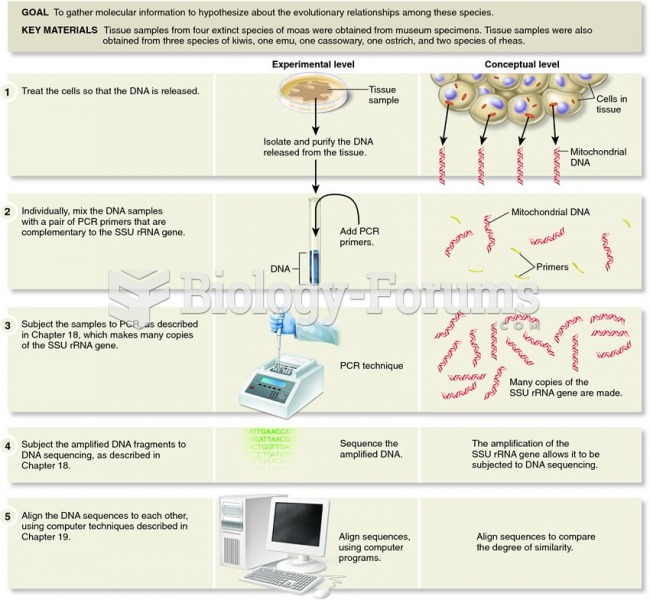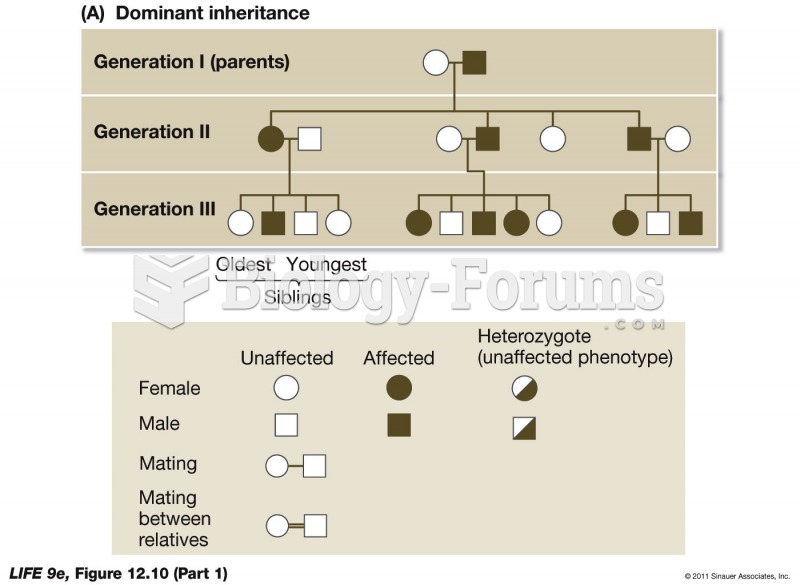|
|
|
There are more sensory neurons in the tongue than in any other part of the body.
One way to reduce acid reflux is to lose two or three pounds. Most people lose weight in the belly area first when they increase exercise, meaning that heartburn can be reduced quickly by this method.
Urine turns bright yellow if larger than normal amounts of certain substances are consumed; one of these substances is asparagus.
Famous people who died from poisoning or drug overdose include, Adolf Hitler, Socrates, Juan Ponce de Leon, Marilyn Monroe, Judy Garland, and John Belushi.
According to animal studies, the typical American diet is damaging to the liver and may result in allergies, low energy, digestive problems, and a lack of ability to detoxify harmful substances.
 DNA analysis of phylogenetic relationships among modern and extinct flightless birds by Cooper and c
DNA analysis of phylogenetic relationships among modern and extinct flightless birds by Cooper and c
 The Taung Child, the first of the australopithecines to be discovered, is the type specimen for Aust
The Taung Child, the first of the australopithecines to be discovered, is the type specimen for Aust





